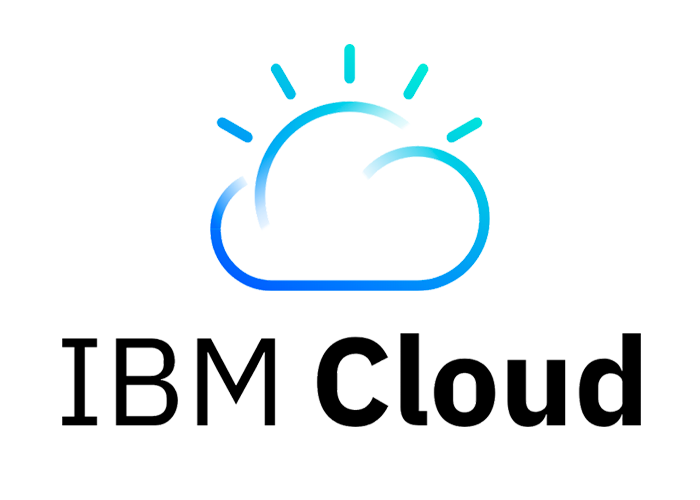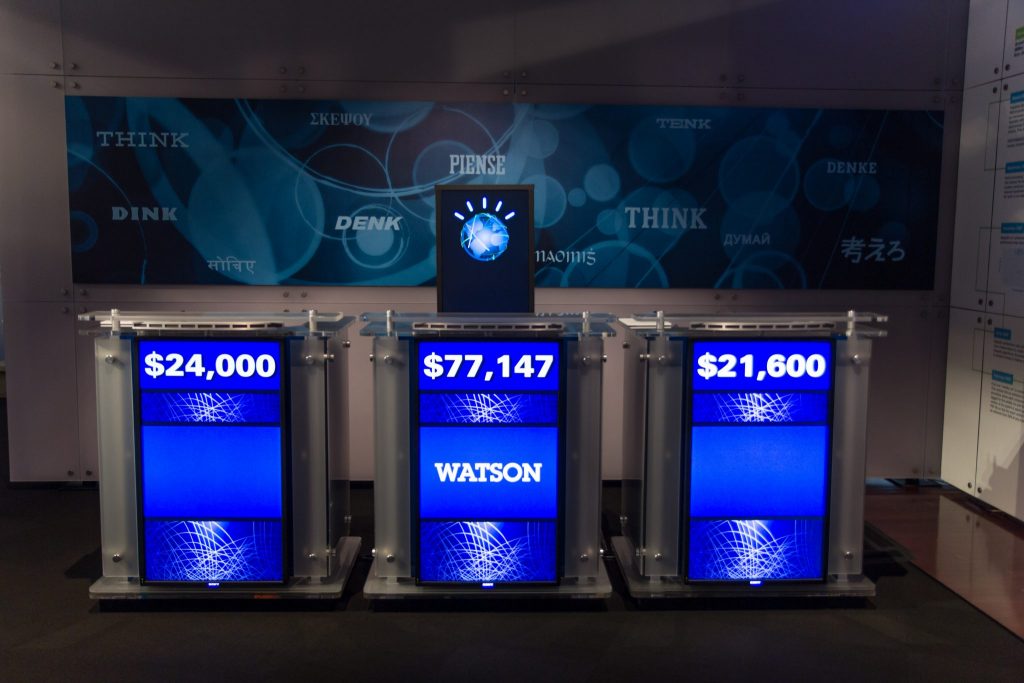From Softlayer to Bluemix to IBM Cloud, it’s pretty obvious Big Blue is having a full-scale identity crisis with regards to its cloud offerings. Bringing the fact to light is analyst firm Gartner’s most recent Magic Quadrant for Cloud Infrastructure as a Service, which ranked IBM in a distant fifth place, behind AWS, Microsoft Azure, Google Cloud Platform, and Alibaba Cloud. The report said IBM’s “cloud experience is somewhat disjointed,” comments that may have had an impact on the firm’s decision to reorganize its offerings under a single brand — and it’s about time!
“Disjointed” is somewhat of an understatement here as IBM has had loads of different names for all its cloud offerings in the past. Those names include Cloudburst, Smart Business, and SmartCloud. SmartCloud was IBM’s first crack into modern cloud computing back in 2008 and was originally called Bluehouse, then changed to LotusLive, and then to IBM SmartCloud in 09.
Cloudburst, a tool to help customers set up a private cloud and IBM’s first real IaaS offering, was also set up in 2009. A new effort called SmartCloud launched two years later in 2011. In 2013, IBM acquired Softlayer and decided to keep the name (surprise, surprise) and launched Bluemix in 2014. It took them another four years to figure out that customers don’t really care about clever code names, so everything is now IBM Cloud.
A new dawn
 Now, all of IBM’s cloud products and services, including its Watson Data Platform and its IaaS, PaaS, and software-as-a-service offerings, fall under the new branding.
Now, all of IBM’s cloud products and services, including its Watson Data Platform and its IaaS, PaaS, and software-as-a-service offerings, fall under the new branding.
The company has also created a new logo to mark the occasion: a cloud with a rising sun behind it, presumably symbolizing a new dawn for its cloud services. A new dawn, minus all the confusing branding, of course. All roads lead to Rome, or in this case, to IBM Cloud.
Apart from all the “name-calling,” however, IBM has been making significant and unprecedented progress under CEO Ginni Rommety, who is on a protracted mission to reinvent the company as a cloud-based “solutions” business. Additionally, she’s done a great job at not playing the IaaS game like everyone else but has leveraged that century-old expertise in modern and relevant ways. One revolutionary concept we will get to in a bit is reconfiguring mainframes for the cloud. Yes, you read that right, mainframes, remember them?
Last year, IBM shocked the enterprise by outperforming everyone including Amazon in cloud computing revenue for the 12 months ended June 30. In so doing, IBM also became the first enterprise-tech vendor to surpass $15 billion in fully recognized cloud revenue for a 12-month period. In total, IBM Corp posted $15.8 billion in trailing-12-month cloud revenue, including $7 billion from helping clients convert traditional systems into cloud environments optimized for today’s digital-business economy.
The power of incumbency

True, that $7 billion may not fall under the orthodox black and white IaaS, SaaS, or PaaS categories, but today’s cloud is anything but black and white and what IBM is doing is exactly what all the best tech companies are doing and that is to pursue the power of incumbency. While the power of incumbency officially refers to the power to use the elected office for political gain, here in the enterprise it has a different meaning.
The power of incumbency in the enterprise refers to the process of realigning all past resources (including customers, traditional products, and services) with new cloud offerings. If it was a poker game, we’d probably call this going “all in” on the cloud or putting all our eggs in the cloud basket. It basically boils down to taking all your expertise, technology, customer relationships, and vertical industries and leveraging them in the cloud.
Microsoft has used its incumbent leadership on hundreds of millions of desktops into the cloud with Microsoft 365. Oracle is pouring everything it can into leveraging its massive incumbent position in databases into various offerings of Database as a Service. SAP is doing exactly the same thing with ERP applications, as is Salesforce with CRM. The best example is probably of an online bookshop that used its incumbency to become the hugely successful Amazon Web Services. That incumbency was the ability to sell online better than anyone else.
100 years of leverage
Microsoft is about 45 years old, Amazon’s about 20, and then there’s IBM, ready to turn 107 this year. That’s over half a century more “incumbency” than anyone else and they’d be crazy not to use it. Back to the $7 billion “gray area” — IBM describes it as “hardware, software, and services to enable IBM clients to implement comprehensive cloud solutions,” and calls it its “cloud conversion” business.
Apart from migrating 100 years of customers to the cloud, IBM is leveraging some interesting “traditional” technology as well, one of which is a supercomputer called Watson. Watson combines artificial intelligence and sophisticated analytical software for optimal performance as a “question answering” machine — many remember it as the computer that won Jeopardy.
It processes at a rate of 80 teraflops (trillion floating point operations per second), accesses 90 servers with a combined data store of over 200 million pages of information, which it processes against six million logic rules. It does this with the help of 2,880 processor cores, 15 terabytes of RAM and 500 gigabytes of preprocessed information.
Back to the future

IBM has since extracted the core machine learning technology from IBM Watson and made it available on IBM Cloud where developers can integrate the world’s most powerful AI into their applications to store, train and manage their data. Additionally, IBM has also made Watson available on their z System mainframes. Yes, mainframes, which are, surprisingly, still the operational core of global organizations where billions of daily transactions are processed. Major financial institutions tend to be extremely loyal customers and today 96 of the world’s top 100 banks use IBM’s System Z mainframes.
In fact, IBM’s claims its new z14 mainframe has been reinvented for the cognitive and cloud era and offers extensive capabilities for Machine Learning and pervasive encryption. They’ve also built a “skinny mainframe” for cloud computing. Mainframe and cloud computing, two words you’d never expect to see together. The system is built around IBM z14 mainframe technology and features a 19-inch industry standard, single-frame case design, allowing for easy placement into public cloud data centers and for private cloud deployments.
The future is Big and Blue
Leaving no stone unturned in its bid to take over the cloud, IBM has also introduced a serverless platform called OpenWhisk, which is available on IBM Cloud. OpenWhisk, like the name suggests, is open source and users have the choice of using the open source version or IBM Cloud’s hosted version. Much like AWS Lambda, OpenWhisk executes a function when triggered by an event of some sort, such as new files being added to a storage service. Unlike Lambda, though, IBM’s OpenWhisk jobs can be triggered by external events, not just those that originate from within a cloud provider’s own infrastructure.
Wearing a red hat
IBM has just acquired Red Hat to boost its focus on Kubernetes and open source. The deal is the biggest software deal ever at $34 billion, and it is too big to discuss adequately here. (I’ll do another piece on that separately.) But what this proves is that IBM will stop at nothing to take the fight to the top cloud vendors, even if that means breaking the bank.
CEO Rometty’s overhaul of the IBM culture is seeing a richly integrated blend of traditional capabilities and technology. They’ve also teamed up with Google to launch the open source container security tool called Grafeas and have a lot more good things cooking, so keep an eye on the all-new IBM Cloud.
Featured image: Shutterstock




It was perfectly ok for IBM to have branded , rebranded their cloud strategy , mission and solutioning a few times . When the technology underneath is as emerging and changing as Cloud , Analytics or IoT I think IBM’s apparent shift in strategising their mission for decking their Cloud landscape is absolutely rational .
It gave them the time and space to understand the pulse of the customer requirements and the breathing space to position themselves well ahead of others who started along with them and are still camouflaged with meaningless strata of what they call as technical manifestations of the Cloud Infrastructure .
They (IBM) were never the early starter of Cloud Adoption but
sometimes it is better to realize the labyrinth of technology maze , take time to untangle the real essence out of the mess of superfluous jargons and deliver only what delights customers and not complicate their infrastructure further .
This is only the beginning . I am sure they will scale up and out to newer standards of Cloud Supremacy .
Long Live Big Blue !!!!